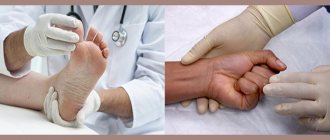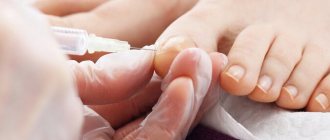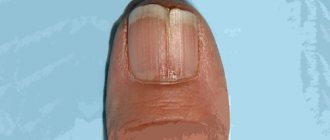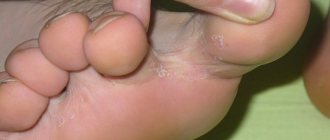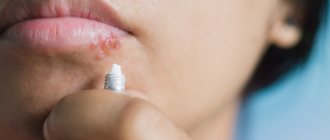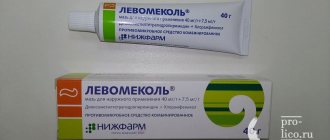The mechanism of formation of emptiness under the nails on the toes and fingers.
Causes of onycholysis on the legs:
- Long toenails.
Often, when covering their toenails with gel polish, girls forget to file the length every 2-3 weeks. Due to the excessive length, there is a load on the nail plate from above and from the end.
- The shoes are the wrong size.
Shoes that are the same length as your foot or shorter put pressure on your big toe. The foot lengthens by 1 cm while walking, which is almost imperceptible to a person. But regular load from such shoes will lead to emptiness under the nail.
- The risk of nail separation from the nail bed increases in dress shoe wearers with a narrow forefoot.
When wearing such shoes, the big toe is severely compressed, the blood circulation of the matrix is disrupted and a void appears under the nail.
What is a subungual wart?
A subungual wart is a benign neoplasm that appears on the leg, arm, and specifically under the nail plate. The cause of its occurrence is the second strain of human papillomavirus.
Subungual warts are benign formations under the nail plate. Cause: human papillomavirus, activated by immunodeficiencies of various natures.
Diagnostics: examination, biopsy, PCR.
Treatment: removal using electrocoagulation, laser therapy, cryotherapy, scalpel; sometimes they get by with the prescription of keratolytics, local necrotizing drugs, and cryodestruction.
The surface of these growths is rough, the shape is spherical or flat, and the color is in most cases gray. Only sometimes there are bodily periungual and subungual warts.
Despite the fact that these new growths are localized on the surface, under certain conditions their roots grow far into the depths. Getting rid of such growths is much more difficult.
Warts that appear on the arms and legs are considered harmless due to the fact that they do not cause discomfort or pain. However, when they are damaged, various infections easily enter the body.
In childhood, the appearance of periungual warts may be associated with frequent trauma to this area.
Young children often injure their fingers in the sandbox or on the playground.If a single wart appears, dynamic observation is recommended. As a rule, they disappear on their own as the child grows older.
Cosmetologist, dermatologist, trichologist
Kalinina Olga Alexandrovna
4 years of experience
Subungual and periungual warts are not only an aesthetic defect. The condition of the nails gradually deteriorates, and over time the nail plates become deformed, become brittle and crumble. That is why treatment must be started as early as possible.
Why does a cavity form under the fingernail:
- nail injury;
- chemical burns resulting from the use of low-quality gel polishes or from contact with household chemicals and other aggressive substances;
- thinning of nails as a result of self-removal of artificial coating or sawing of the nail plate with a file (cutter) by a master;
- onychophagia, or a mental disorder in which a person bites or picks at the nail beds and the skin around them. As a result, the nail peels off from the nail bed;
- attempts to move the hyponychium or clean out dirt under the nails with something sharp;
- dermatological pathologies.
If you notice the first symptoms of onycholysis, contact the PODOLAB Podology Center in St. Petersburg. Podologists will advise you on this problem. And you will quickly restore the attractive appearance of your nails.
Surgical treatment of ingrown toenails
After an examination, the surgeon offers conservative (at the first stage) or surgical treatment of the ingrown toenail. At the initial stage of an ingrown toenail, the doctor performs tamponade (placing a cotton swab under the nail plate) to remove the nail from the soft tissues. After tamponade, the doctor corrects the direction of nail growth.
If infection and pus are detected, the surgeon suggests partial resection (removal) of the nail plate along the edge or excision of the growth zone of the ingrown nail. If a fungal infection of the nail or its significant deformation is detected, the surgeon will recommend complete removal of the nail plate. Surgery for an ingrown nail is performed to eliminate the source of suppuration (wild meat), stop necrosis (death) of soft tissues near the nail plate.
Surgical treatment of ingrown toenails is performed using a laser under local anesthesia. The surgeon excises the side of the soft tissue that is adjacent to the ingrown nail, or removes part of the nail plate. The doctor evaporates and removes damaged soft tissue using a laser. After completing the operation on the ingrown toenail, the doctor will apply a bandage.
Depending on the stage of the ingrown toenail, the type of infection and the type of surgery performed, the doctor may prescribe additional drug therapy and ointment for ingrown toenails. After removing the ingrown toenail, the surgeon will tell you when to bandage it.
How to treat onycholysis?
The sooner you contact a podologist or dermatologist to identify the cause of nail detachment, the higher the chances of successfully eliminating the problem.
During the restoration of fingernails or toenails, there is a strict ban on any traumatic procedures, nail extensions, the use of decorative varnishes and aggressive chemical liquids.
If fungal spores have entered the cavity under the nail and onycholysis is infectious in nature, then treatment for onychomycosis is prescribed by a dermatologist.
If the nail plate on your ring finger periodically comes off, then there is a possibility that you need to seek treatment from an endocrinologist and adjust your hormonal levels.
Diagnostics
An experienced doctor is able to distinguish a subungual or periungual wart from other neoplasms during the first visual examination. Despite this, a number of additional studies are most often carried out:
- Dermatoscopy - the growth is examined at multiple magnification.
- Biopsy - a sample is taken from the affected area and sent for histological examination. Thanks to this, it is possible to obtain information about whether the growth is malignant.
- Prc diagnostics - it is used to determine the HPV strain and the number of virus particles in the body.
Only after making an accurate diagnosis does a specialist prescribe a course of treatment. Therapeutic measures largely depend on the type of papillomavirus and the degree of risk of the growth degenerating into a malignant tumor.
Consequences of the problem
It is necessary to consult a doctor in a timely manner so as not to aggravate the situation and not lead to complications. Ingrown toenails come with a risk of infection in the affected area. As a result, suppuration may occur.
In the absence of proper therapy, ingrowth can lead to abscess, osteomyelitis and sepsis. In children, the infection spreads quickly. This is especially dangerous for weakened children with diabetes. Source: I.P. Zhurilo, V.K. Litovka, G.A. Sopov, K.V. Latyshov, I.N. Inozemtsev The problem of ingrown toenails in children // Child's Health, 2012, No. 2(37), pp. 139-141
Doctors take the problem of ingrown toenails seriously and recommend promptly starting therapy and carrying out a set of measures.
Symptoms of the disease
The manifestation of onychocryptosis in children is difficult to detect when the child cannot explain what is bothering him. Mom may notice swelling and redness of the nail fold. If pus is released, you should consult a doctor to treat and treat the affected area. Independent actions can aggravate the problem and lead to the need to remove a child’s ingrown toenail.
Main symptoms:
- pain that gradually increases;
- redness and swelling, if infection occurs, suppuration occurs;
- overgrowth of the affected area with soft tissues;
- increased body temperature as a consequence of the inflammatory process.
Treatment of pathology
What to do if a child has an ingrown toenail and becomes inflamed? It is necessary, without delay, to consult a doctor who will conduct an examination and prescribe adequate treatment.
Parents often do not correctly assess the severity of the problem. Suppuration may not be noticeable. If you take a hot bath or warming procedures, it will only harm your health.
You cannot begin treatment for an ingrown toenail if suppuration is visible on the child’s foot, without consulting a surgeon. Make an appointment with a specialist so that your baby recovers quickly without the risk of complications.
At the first manifestations
The problem doesn't come out of the blue. Already at the first complaint of pain from a child, you need to carefully examine the leg. If you notice that the edge of the nail rests on the roller, which has turned red or white, you need to prepare a warm bath with chamomile or a weak solution of potassium permanganate. Then wipe the area with alcohol. Remove the part of the plate that rests on the soft tissue. Monitor your finger closely until the inflammation goes away. Source: A.B. Baburin, V.I. Loginov, V.V. Parshikov Method of complex treatment of ingrown nails // Medical almanac, 2012, No. 5(24), pp. 228-230
Surgical method
When the problem is serious, accompanied by suppuration and inflammation, they resort to surgery. Doctors remove the edges of a child's ingrown toenail.
Features of the procedure:
- a piece of skin is taken from the pad to stitch the wound, the rollers are moved away from the edges and the nail plate grows straight, in the right direction;
- For children the intervention is performed under general anesthesia, for older children under local anesthesia;
- After the procedure, you must come back for dressing changes twice, follow the care recommendations and wear open-toed shoes;
- the rehabilitation period lasts about a week, complete healing requires 20 days;
- To prevent recurrence of the problem, it is recommended to take baths to steam the finger and carefully move away the skin ridges, giving the nail a rounded shape.
Medication method
The measures are aimed at relieving inflammation and treating without surgery. Prescribed agents for oral and external use. Tamponade is used - placing a material soaked in medicine between the nail and the roller. Ointments effectively relieve inflammation and pain, and draw out pus. If ointments alone are not enough, medications are prescribed for oral administration. Source: https://www.ncbi.nlm.nih.gov/pubmed/30843080 Gera SK, PG Zaini DKH, Wang S, Abdul Rahaman SHB, Chia RF, Lim KBL Ingrowing toenails in children and adolescents: is nail avulsion superior to Nonoperative treatment? // Singapore Med J. 2022 Feb;60(2):94-96. doi: 10.11622/smedj.2018106
Causes of ingrown toenails in children
- Insufficient care - it is necessary to regularly trim the plate evenly, without rounding.
- Lack of vitamins in the diet - deformations of the nail occur, it injures soft tissues.
- The appearance of fungus means the surface becomes uneven, increasing the risk of developing pathology.
- Flat feet - the uniform distribution of the load on the foot is disrupted.
- Rickets - too thin and brittle nails.
- Incorrectly selected shoes are narrow, tight, which compress the foot and lead to ingrown hairs.
- Genetic predisposition - if close relatives have a tendency to ingrown nails, you need to carefully monitor your baby’s nails.
- Trauma - if a child hits or injures a finger, pathology may occur.
Prices
| Name of service (price list incomplete) | Price |
| Appointment (examination, consultation) with a pediatric surgeon, primary, therapeutic and diagnostic, outpatient | 1950 rub. |
| Consultation (interpretation) with analyzes from third parties | 2250 rub. |
| Prescription of treatment regimen (for up to 1 month) | 1800 rub. |
| Prescription of treatment regimen (for a period of 1 month) | 2700 rub. |
| Consultation with a candidate of medical sciences | 2500 rub. |
| Hernia repair of umbilical hernia/hernia of the white line of the abdomen, category I. difficulties | 33,000 rub. |
| Removal of condylomas, category I. difficulties | 3550 rub. |
| Removal of condylomas, category II. difficulties | 8900 rub. |
| Excision/removal of benign formations of the skin and mucous membrane, category I. difficulties | 2550 rub. |
